Over the years I’ve become an enthusiastic reader of biography and memoir. Everybody, from the “great” people of history to the utterly on-the-surface-ordinary Joes and Janes, has a story.
There are different kinds of memoir. If I seek out one by, say, Winston Churchill, I’m less interested in the events of his childhood than in getting his take on how he changed the world. It’s a slanted, autobiographical view of history, but still one worth knowing. As Winston once cracked, “History will be kind to me, for I intend to write it.”
But as author Marion Roach Smith points out in The Memoir Project, memoirs are not autobiographies. Rather, she suggests that memoir is “the single greatest portal to self-awareness…writing about how you grew up to be who you are…little moments, revelatory real events, are what turn and shape our lives.”
That’s what I saw – no, it was actually what I nearly experienced – as I read and then re-read American Girl: Memories that Made Me, by Georgia Scott.
We don’t learn a lot about the author’s life as an adult or about her distinguished academic career. All the book says about her is that she is an author and a poet, whose work includes two collections of poetry and books on British and American literature. It doesn’t mention her three degrees, topped by a doctorate in Jewish studies, her faculty appointments in Michigan, Japan, and Poland, or her nine years of study and writing in London.
You also have to dig around to find that she had a Fulbright Scholarship to teach African American literature in Poland, and that Lech Walesa endorsed her poetry book, The Good Wife, as “a brave and beautiful book.” She read her first published poem for the preliminary talent competition in her state’s Miss America pageant, where she finished runner-up. She’s done more than sixty poetry readings and performances throughout Europe and America. She lives in Gdansk, Poland.
But if we don’t get Scott’s life story from this book, we do learn what makes her tick, what shaped her life and brought her in Roach Smith’s terms “from what you once did not know (Act One) and what you now know after you’ve been through it (Act Three.)”
Scott grew up in a seaside town near Boston. She dubs it with the pseudonym “Belle Isle.” The town, the busy street she calls “Wisteria Drive,” and all of the neighbors, family members and acquaintances who segue in and out of her young life are also given pseudonyms. Local businesses, public figures, and other places retain their real names, so anyone who grew up in “Belle Isle” will instantly recognize them.
Reading this memoir is much like reading a collection of poems. The chapters are short; there are 138 of them in the 268-page printed edition. Actually, there are many echoes from Scott’s previously-published books of poetry sprinkled throughout. She has that knack for observation and turn of phrase that only gifted poets seem to have.
In this way, her book reminds me of Glad Farm by Catherine Marenghi, which I consider the gold standard in memoir-writing. I reviewed it here a few years ago. Its chapters are also short, with 35 of them over 281 pages. Marenghi, like Scott, is an acclaimed and frequently-published poet. Both women, I suspect, would tell you that they prefer writing poetry to writing prose; their love poetry is as provocatively erotic as anything you’ll find in the Bible’s Song of Songs. But when they do write prose, the clever images, similes, and metaphors crop up on almost every page.
For Scott’s writing style alone, her book is a treat. Here are just a couple of examples of her poetry-in-prose:
Recalling trips to the beach with her older sister, she writes, “The rules were simple. Never turn your back on the water. Know which way the tide is headed. In or out…When I think back, those tides were like women with different scents and different demands. Low tide was fruity and cool. It took a while to get to her edge. Low tide held back. The onus was on you to go over to her. High tide smelled of heat that built up. It was Chanel No. 5 to her drugstore opposite. She went after you in no uncertain terms.”
In describing her house, Scott takes a single sentence that runs on for 20 printed lines to tell us of all the unique aspects – white columns, hand-painted Dutch tiles, intricate parquet floors, and so on – that were not the reasons that her mother fell in love with the place. Then she pivots to write “No” with three more sentences spanning just two lines. They land like jabs in a boxing ring to tell us why her mother liked the window seat in the front hall most of all.
Severe physical setbacks played a big role in shaping Scott’s attitude towards life and in honing her powers of observation. Relegated to the sidelines for a few years – on crutches, with rheumatoid arthritis as a schoolgirl and six months in a full body cast after back surgery as a college student – she learned some hard lessons and developed a gimlet eye on everyone who crossed her path.
In a blurb on the back cover of the book, she states, “Long periods of convalescence don’t make for an endearing child…your best skills are as transferable as soldier’s ability to kill.”
Sheesh! Here I want to make a side remark. I have to take issue with another thing that she wrote for the book’s back cover. I’ll quote it here first.
“My stillness is not surrender anymore than my silences are. If you think I acquiesce, think again. I am watching. I am listening. I am noting everything down. The transformation of my right middle finger began in those months. The protrusion in the first joint resulted from the pressure of pencils and pens in my hand. Typewriter and computer use have reduced it somewhat in recent years, though not entirely. See. My middle finger is still raised.”
I don’t see that here. Yes, she’s “on” to everybody, and her assessments along the way are appropriately critical. But I don’t see her flipping us all the bird. I see an understanding instead, a willingness to forgive. It may be coming at long last, but it’s there. Maybe you won’t agree with me. But read the book before you decide.
As the book moves along, Scott’s perspective widens. She becomes more and more perceptive. We see her growing into a worldly-wise adult, from Act One to Act Three, as Marion Roach Smith describes. As a child, she wondered how Perry Mason could be so smart and never see how madly in love with him that Della Street was. At school, trying to get around in her crutches, she was labeled “diseased” by an older girl. “I learned that a smiling face could carry an insult…she left me with a wariness of my peers. Girls, that is. The boys didn’t bother me at all.”
Her widowed mother became romantically involved with a neighbor, also widowed, and there was one time she saw them kissing, “in an embrace worthy of Rodin.” She’d never seen her mother and father kissing, though. She ran upstairs, cried into her pillow, and rubbed her eyes, “wishing I could erase what I saw.”
Later, when her mother’s romance ends unhappily, she writes “I don’t remember the last time [he] visited. That’s the problem with real life as opposed to what is made up. You don’t know until after things happen what is important. Sometimes you spot it after. More often not. The domino that topples the rest is lost…The house got quieter without their laughter. Tarantellas became a memory.”
The author’s most distressing memory, the one that “marked my entry into that club of adults that I had wanted to join for so long,” still bothers her. One of the adult children who lived next door, a Korean War veteran, apparently cut himself late one night and bled to death. One of the neighbors came in to help and “did what she could. He seemed alright when she left. But in the morning he was dead.”
Scott tries to make sense of that incident, and can’t. “What was done was done and what wasn’t was never spoken of again. Yet, I never forgot. It was the death that no one could know about. It became ours alone. Like a chocolate heart that is crushed but kept in a drawer because it is all that a lover could give it has been my secret until now. No one is left who can be hurt, I don’t think…The question that has haunted me for years is not to him but to those others who were there with him. One who amused me and one whom I loved. Why wasn’t an ambulance called?”
Act Three, indeed.
Another similarity to Catherine Marenghi’s story is that Georgia, like Catherine, did not come to know “the whole truth” about herself and her family until relatively late in life. In Glad Farm, we read of Catherine’s discovery of family correspondence and newspaper clippings in an old cedar chest that revealed the details of her parents’ dreams and ambitions, as well as a tragic death that no one ever spoke of.
In Georgia’s case, it takes until the end of the book for us to find out just what she meant to her father, who died suddenly when he was just forty-five. Fifty years later, one of her sisters told her of the family’s situation and where they had lived in the city, not in the town of Belle Isle, when Georgia was born. She had never known just how her arrival changed everything. She then, at long last, realizes why her mother had always said, “He loved you all, but you were special.” And that revelation inspired her to write this book.
In an early chapter, Georgia writes, “I didn’t miss my father. That was the awful truth. A source of guilt, I let no one know and I only realized as a person realizes a staircase is steep. Step by step or in my case, year by year.”
But near the book’s end she is recounting her dreams of her father, dreams in which she never saw his face. It never came into view but stayed a whitish-grey, and, “His voice gave no reassurance. It remained mournful as a foghorn for years. Now he sings. It wasn’t my time to go then, but when it comes, I hope he’s there.”
That brought tears to my eyes.


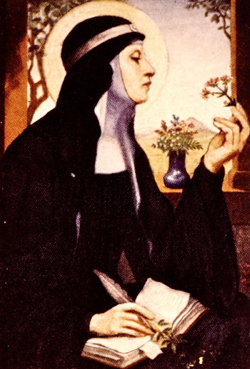








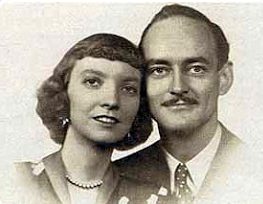






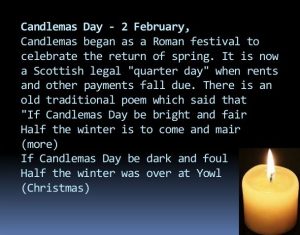


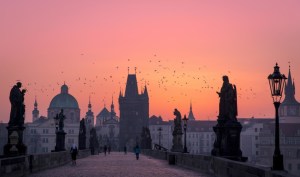

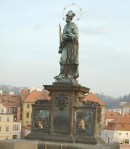


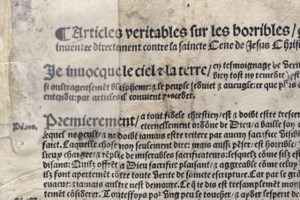
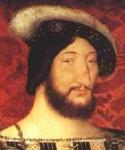


From the annals of plus ça change, plus c’est la même chose
October 7, 2020Coincidental, indeed, is the headline of this month’s blog post. It is 171 years old, having been coined in 1849 by French journalist and critic Jean-Baptiste Alphonse Karr in the January 1849 issue of his journal Les Guêpes (“The Wasps”).
I had decided on that title after reading a passage from Alexander Herzen’s memoir, My Past and Thoughts. Herzen, a Russian émigré nobleman who has been called “the father of Russian socialism,” had made his way to Paris during the revolutionary year of 1848. You don’t have to buy his entire outlook and philosophy to appreciate his literary skills and his powers of observation.
The following passage was written after Herzen attended an evening of drinking and scheming at the Café Lamblin. I quote it without further commentary, other than to opine that he could just as well have been writing about a sizable cohort of the denizens who prowl and streets and the Twitterverses of 2020.
The more things change, the more they stay the same. You bet.
“In the café the various habitués of the revolution were sitting at a dozen little tables, looking darkly and consequentially about them from under wide-brimmed felt hats and caps with tiny peaks. These were the perpetual suitors of the revolutionary Penelope, those inescapable actors who take part in every popular demonstration and form its tableau, its background, and are as menacing from afar as the paper dragons with which the Chinese wished to menace the English.
“In the troubled times of social storms and reconstructions in which states forsake their usual grooves for a long time, a new generation of people grow up who may be called the choristers of the revolution; grown on shifting, volcanic soil, nurtured in an atmosphere of alarm when work of every kind is suspended, they become inured from their earliest years to an environment of political ferment – they like the theatrical side of it, its brilliant, pompous mis en scène…
“Among them are good, valiant people, sincerely devoted and ready to face a bullet; but for the most part they are limited and extraordinarily pedantic. Immobile conservatives in everything revolutionary, they stop short at some programme and do not advance.
“Dealing all their lives with a small number of political ideas, they only know their rhetorical side, so to speak, their sacerdotal vestments, that is the commonplaces which successively cut the same figure, à tour de rôle, like the ducks in a well-known children’s toy – in newspaper articles, in speeches at banquets and in parliamentary devices.
“In addition to naïve people and revolutionary doctrinaires, the unappreciated artists, literary men, students who did not complete their studies, briefless lawyers, actors without talent, persons of great vanity but small capability, with huge pretensions but no power of work, all naturally drift into this milieu.
“The external authority which guides and pastures the human herd in a lump in ordinary times is weakened in times of revolution; left to themselves people do not know what to do.
“The younger generation is struck by the ease, the apparent ease, with which celebrities float to the top in times or revolution, and rushes into futile agitation; this inures the young people to violent excitements and destroys the habit of work…One must not be left behind, there is no need to work: what is not done to-day may be done to-morrow, or may not even be done at all.”
Tags:social commentary, social justice, socialism
Posted in Events and Society | Leave a Comment »